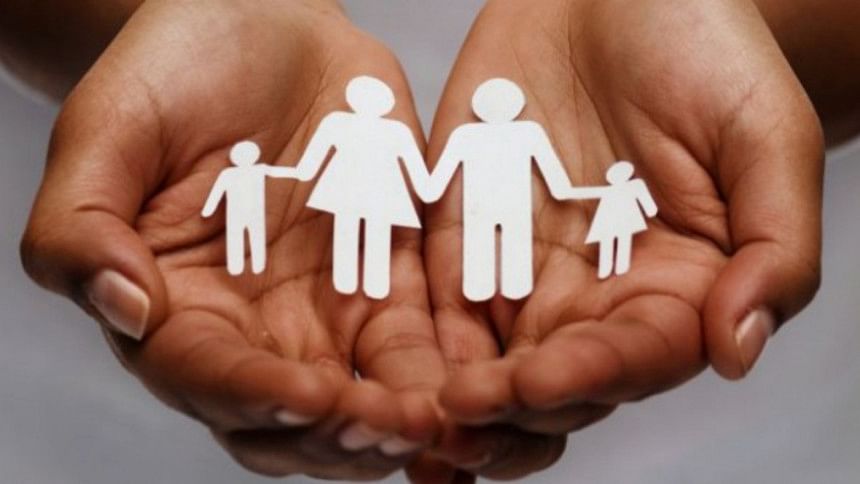World Population Day 2020: Stalled progress, Covid-19 and the road to SDG

In 1989, the United Nations decided to observe July 11 as World Population Day every year in the wake of the world population reaching five billion. The purpose was to bring attention to the "health, development and environmental impacts of rapid population growth". The world population has now risen to 7.8 billion, and in my own lifetime, it has more than trebled.
In the newly independent Bangladesh, "population explosion" was a huge worry. We have come a long way since then and it is no longer considered the nation's top problem. Thanks to the sustained attention and efforts of different stakeholders, Bangladesh is now a success story. In 1971, Bangladesh's total fertility rate (TFR), defined as the number of live births given by a woman at the end of her reproductive period, was over 6. It has now been reduced to 2.3, which is very close to what the demographers call the "replacement level". Similarly, in terms of other related parameters of population health, Bangladesh's progress over the past few decades has been exemplary. Maternal mortality ratio (MMR), defined as the number of women dying due to pregnancy and delivery-related complications per 100,000 live births, has been reduced from over 700 to less than 200 during the same period.
In 1975, I along with a group of fresh university graduates joined the Bangladesh Fertility Survey (BFS), one of the first population surveys done in the country. This took us to many nooks and corners of the country. BFS was a part of the worldwide fertility surveys carried out under the World Fertility Survey. When the results were published a year later, Bangladesh had one of the lowest rates of contraceptive prevalence (CPR)—only about eight percent of eligible couples were using some form of contraceptives. Family planning was a taboo and nobody wanted to talk about it openly. Our female colleagues in BFS had a really tough time to communicate this subject with village women.
Now, family planning is hardly a taboo—women freely talk about it even in front of menfolk. This is a revolution, particularly in the context of a conservative Muslim society. Soon after the BFS was over, I joined BRAC and was fortunate to spend extended periods of time in remote rural areas. It was pleasantly surprising to see how the organisation was promoting the concept of a small family being the norm. A study done in Sulla, a remote upazila of Sunamganj district, in collaboration with Cholera Research Laboratory (now Icddr,b) and Bangladesh Institute of Development Studies (BIDS), found the CPR to be 20 percent, the highest for that time in the country. The Bangladesh contraceptive revolution is owed to many—the government, NGOs, private sector, and development partners.
Unfortunately, the progress has now stalled. The TFR has remained the same for the past decade or more, and so has the CPR. The MMR and other health-related indicators have also stalled since 2010. This means we are perhaps not on track for the different targets of the Sustainable Development Goals (SDG).
Covid-19 threatens not only the continued progress but the sustenance of the gains we have made over the past several decades. Experts are concerned about the collateral effects of the pandemic on non-Covid health services. Vaccination coverage, maternity services including institutional delivery, contraceptive uptake and other services have marked a downward trend. This is because of both demand and supply factors. Potential users are apprehensive of contracting coronavirus when they visit a health centre. In the supply front, there is a drop in service provision due to diverted attention and resource flows to Covid-19 response and the presence of perennial governance issues including absenteeism.
The theme for this year's World Population Day is "the sexual and reproductive health needs and vulnerabilities of women and girls during the pandemic". A recent UNFPA study estimates that if the lockdown continued for six months and there is major disruption to health services, both of which seem to be true in Bangladesh, then 47 million women in low and middle income countries (LMIC) would find it difficult to access modern contraceptives, leading to seven million unintended pregnancies. Apart from this, there would be a rise in gender-based violence, female genital mutilation and child marriages. Another study from the same agency predicted that a one-year average delay in implementing interventions to end child marriages could lead to 7.4 million new marriages taking place in the next decade. Pandemic-related economic downturn is estimated to result in an additional 5.6 million marriages over the same period—a total of 13 million child marriages during 2020-2030.
We in Bangladesh are already feeling this heat. In a webinar arranged by the Civil Society Platform for the SDGs a few days ago, NGO participants from different parts of the country raised their deep concern over rising child marriage in their localities. Helplessness of parents in the midst of the pandemic, social pressures, economic reasons and school closures are responsible for this sad state of affair.
As a nation with so much of optimism and hope, we have to face these eventualities. Bangladesh is not unique in this situation. Such effects are being reported for many countries. In the United States, for example, a new "baby-boom" is being speculated by the end of 2020. To combat such a situation, agencies are initiating innovative solutions. PSI, an NGO, has initiated a new movement, "Flatten the boom", to inform potential boomers of the availability of alternative family planning services in their localities.
There are two immediate issues for us—containing Covid-19 and putting ourselves back on track for the SDGs.
The government has adopted several measures in combating the pandemic. There is evidence that it has achieved some early positive results. Containing it fully, however, will require more decisive measures. A lot on these latter measures has been discussed in the columns of this newspaper and other fora. What is most needed is a transparent, coordinated and science-based strategy that engages the whole of society and makes use of the assets we already have, such as community health workers. We need to go back to Bangabandhu's March 7 clarion call and empower and prepare every household for this protracted war.
It is clear that we are not on track to achieve the related targets of the Sustainable Development Goals. We have already faltered on the maternal mortality and fertility targets. The latest 2017 survey documented an MMR of 196 but, according to SDG targets, we are supposed to reach a ratio of 70 by 2030. Given the recent track record and the current Covid-19 onslaught, it is unlikely that we will achieve the SDG target unless some drastic and bold steps are taken. The progress we made until about 2010 was possible by making good use of some of the "low hanging fruits" such as easy availability of contraceptives, building new health centres, increasing vaccination coverage and acting on the social determinants of health including primary education, poverty alleviation, women's empowerment, and creating space for NGO and private sectors. Moving from here for a quantum leap forward will require utmost political commitment and imaginative solutions.
This will require greater focus on the "higher hanging fruits". It is imperative that the government move from a "business as usual" to a drastic reform of the health system that will involve but not be limited to setting up of a high-powered permanent national commission on health reforms; increasing investments for health; improving accountability, governance, transparency and management; streamlining data systems; strengthening primary health care; and engaging the whole of society. These, if done well, should lead to much-promised universal health coverage where every citizen will have access to quality healthcare without suffering financial hardships.
Covid-19 has shown how various countries have faced the crisis differently with varying results. One conclusion that has gone viral on social media is that the countries that have women at the helm have done exceedingly better than others. The countries in this list are Denmark, Finland, Germany, New Zealand, Iceland, Norway and Taiwan. We can definitely hope to be in this league! Can't we?
Dr Mushtaque Chowdhury is the former Vice Chair of BRAC, Professor of Population & Family Health at Columbia University, and Convener of Bangladesh Health Watch.

 For all latest news, follow The Daily Star's Google News channel.
For all latest news, follow The Daily Star's Google News channel. 



Comments